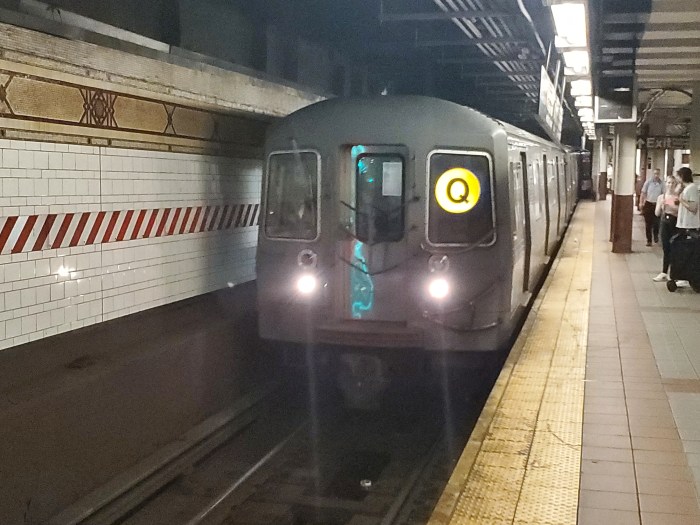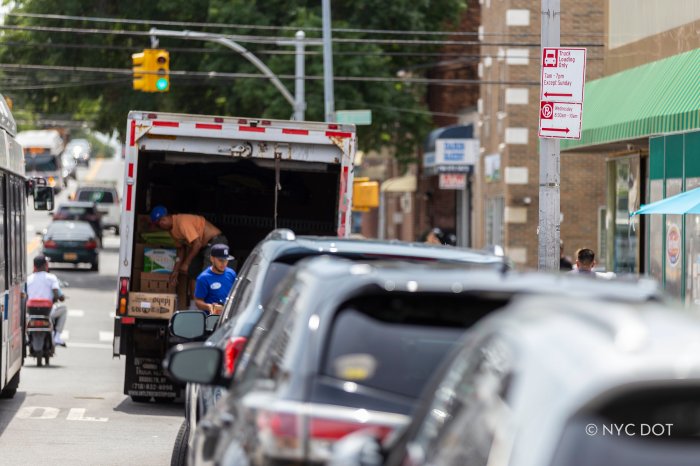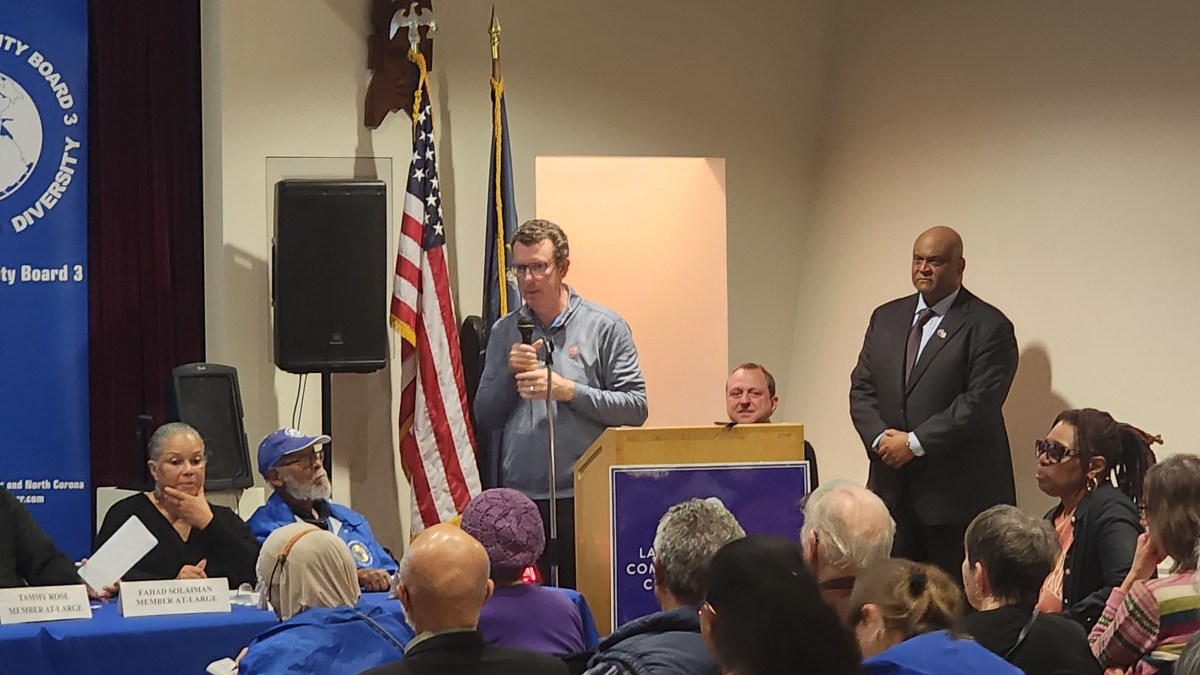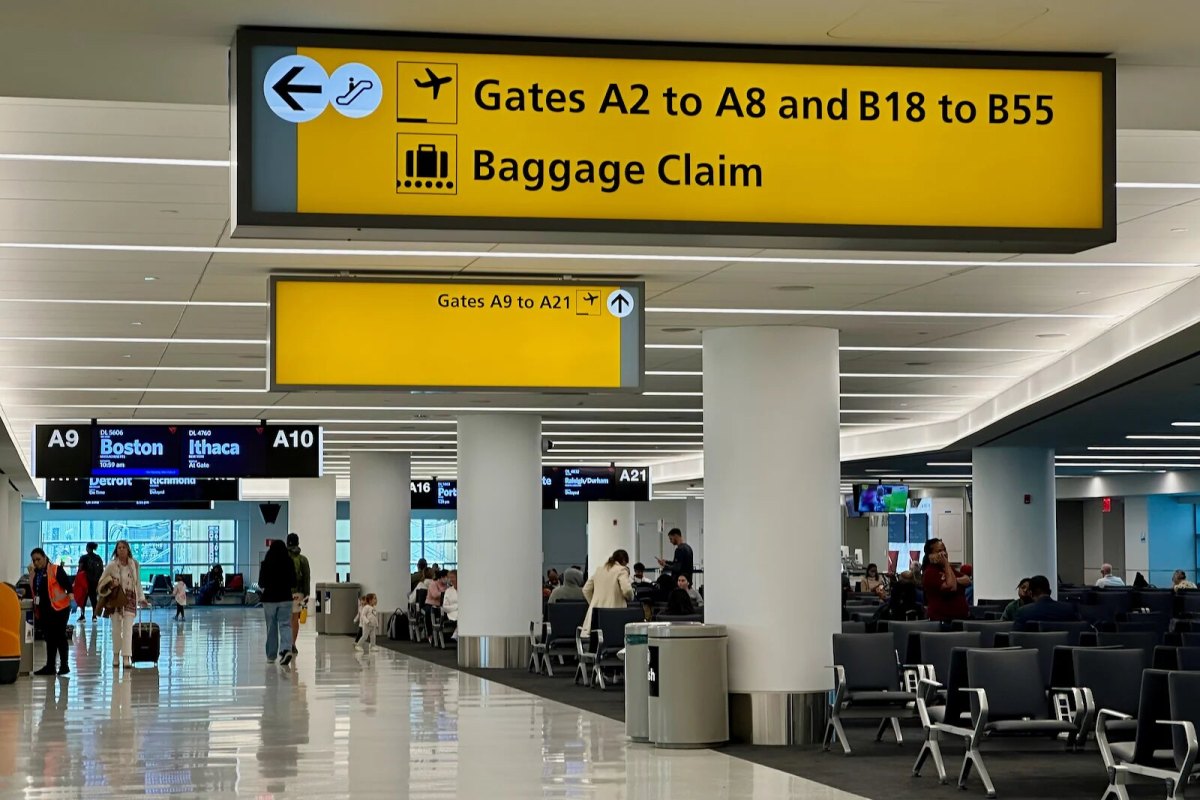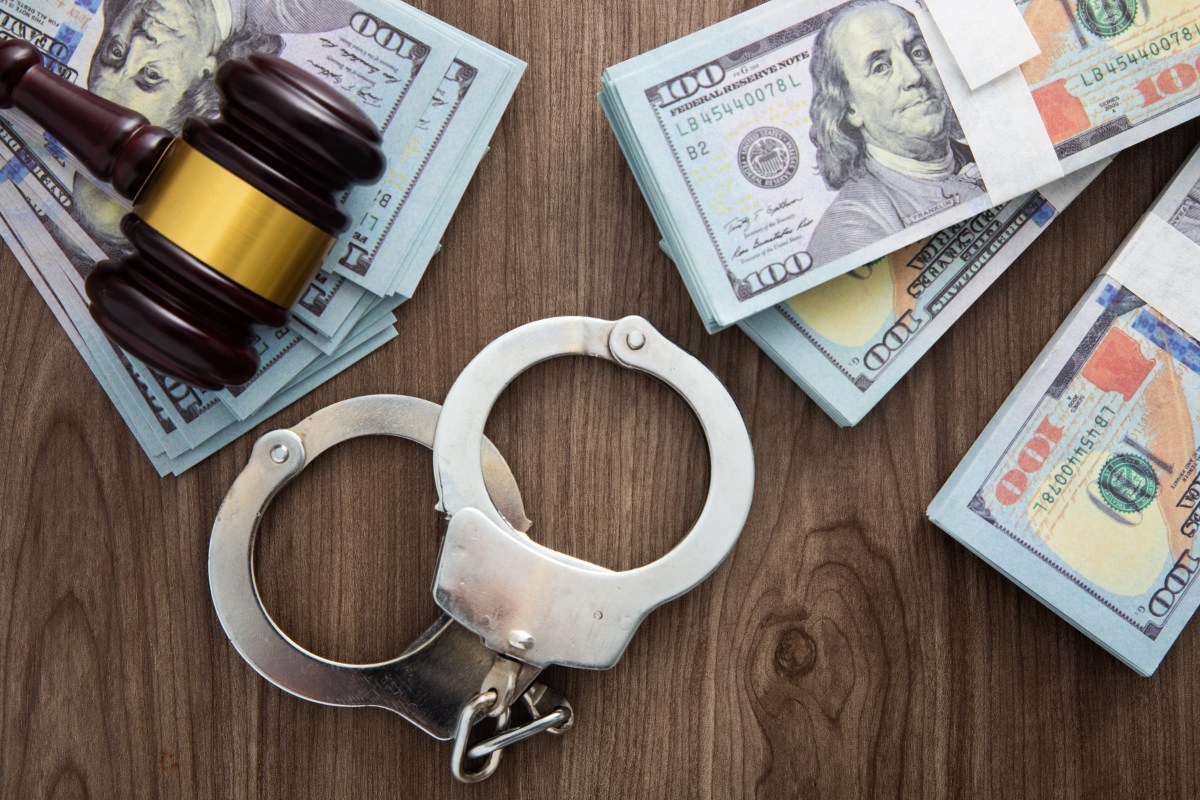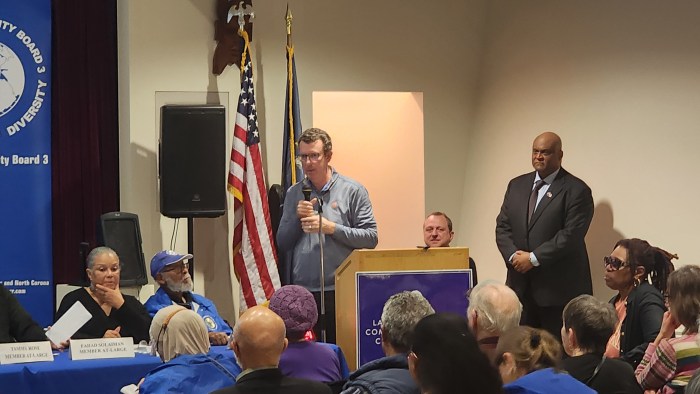New York City Transit officials said yesterday they are going to test out ways to tackle slow and worsening service on the 6, 7 and F lines in an effort to cut down overcrowding and get trains moving.
Officials are focusing on these lines because of the long waits for riders in stations. This effort includes hiking the number of station platform “controllers” to more than 100, up from the 29 employed now.
These crews, who will hit platforms over the year through January at rush hours and other times during the day, will get people in and out of trains quickly, and answer questions from riders to free up conductors. Cameras will also be monitoring crowding at stations.
“If a train comes into a station and it’s held there because of crowding or it’s held there for any reason, it delays that dwell time and that impacts all our customers up and down the line,” said NYC Transit chief Carmen Bianco.
The MTA is even trying to shave off mere seconds in order to get trains out of stations faster with shorter “next stop” subway announcements, which have been tested on the Nos. 2 and 5 trains.
Also, “step aside” boxes will be painted onto platforms at the No. 6 train 51st and 86th street stations; these reminders to riders to move out of the way and let people off the train are currently in Grand Central Station.
The 6, 7 and F trains have an average weekday ridership of 1.9 million.
The No. 6 train meets its scheduled pickups at stations only 67.9% of the time, making it among the worst performing line and the primary focus of the MTAas efforts. The No. 7 train is on time 76% of the time and the F meets its schedule 72.1% of the time, according to the latest MTA stats.
“These lines were chosen because they’ve experience the most dramatic decrease in wait assesment, the time between two trains at a station over the last two years,” said subways chief Joe Leader.
Delays have been plaguing subways as ridership surges to levels not seen since the 1940s post-war boom. Overcrowding has been the top culprit for tying up service; 16,279 out of 52,189 delays in March a 31% a were from overcrowding.
The aging system compounds the delays as signal problems snag up service and train cars travel fewer miles before a mechanial failure.
Part of the improvement plan is to stem and recover from aunplanned eventsa with teams of signal, track and third rail experts to quickly fix malfunctions; and better inspections with aultrasonica trains that spot track problems.
These problems would be addressed in the MTAas five-year, $32 billion transit repair and expansion program, but state and city officials have yet to figure out a way to plug the $14 billion gap in funding the transit authority needs.
Riders have certainly noticed the deterioration of transit service at a time when thereas scheduled fare hikes every two years.
This plan to improve service was devised because there’s just no more room on the tracks for additional trains on 15 of 20 lines. For that, the MTA needs to install expensive and time-consuming signal technology already in use on the L train and soon coming to the No. 7.
“We can’t do much,” Bianco said. “And so what we need to do is make sure the service is running as even as possible and that means really just expediting the trains through the system.”




